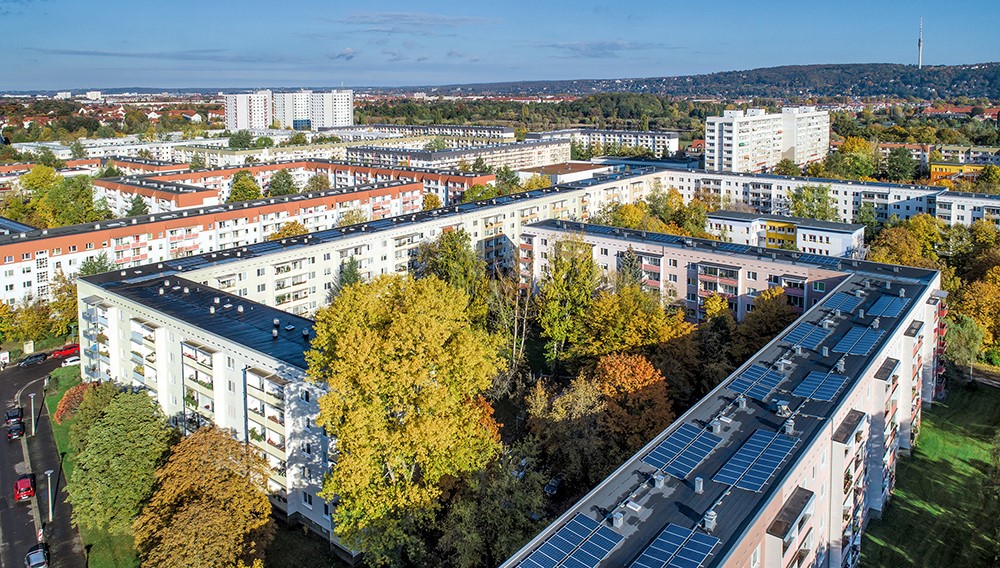Sweden
Sweden’s economy fared better than expected in 2021: With projected GDP growth of 4.9%, the GDP-level is already higher than it was at the end of 2019 before the pandemic struck. Somewhat weaker international demand, disruptions affecting production and a slight slowdown in consumption on the back of rising energy prices will contribute to more subdued growth in the quarters ahead, according to the SEB Group. This slowdown will, however, only be of a temporary nature. With vaccination rates on the rise and the lifting of measures to contain the virus, private consumption will be a key growth driver, flanked by rising employment and wages. According to the forecast released by the National Institute of Economic Research (NIER), GDP growth will come in at 3.3% at the end of 2022 before dipping to 2.0% in 2023 as the momentum provided by the post-pandemic catch-up process starts to taper off.
Gross fixed asset investment came as a positive surprise with growth of 6.9% in 2021. Favorable financing conditions, the transition towards a greener economy and digitalization are expected to lead to sustained high investment growth in the corporate sector.
Consumption among private households remains the main factor driving the economic recovery. Inflation that is higher than expected is, however, putting pressure on consumption, and the new restrictions to combat the pandemic in force since January 2022 are also likely to reduce consumption in the service sector in particular. The National Institute of Economic Research (NIER) expects private consumption to increase by 5.2% in 2021 and by 3.9% in 2022. Public consumption expenditure also increased by a substantial 3.4% in 2021, largely in connection with spending on the healthcare system and labor market programs due to the pandemic. The NIER expects to see lower growth of 0.8% in 2022.
Rising consumption and growing investment fueled a boom in import demand in 2021. Supply bottlenecks and supply problems, particularly in the automotive industry, are likely the main reasons explaining why exports could not quite keep up with the import momentum. Nevertheless, the demand outlook for the Swedish export industry is looking promising.
The Swedish labor market continued to strengthen last year. Employment grew at a faster rate than the working-age population, and the shortage of workers has been exacerbated further, particularly in manufacturing and services. The NIER expects the unemployment rate to drop from a projected 8.9% in 2021 to 7.5% in 2022.
CPIF inflation – the increase in the consumer price index with a fixed interest rate – averaged 2.4% in 2021 according to the NIER. It had, however, climbed to 4.1% by the end of the year, driven primarily by higher electricity prices and the rising cost of clothes and transport services. In 2022, the institute expects inflation to increase further to 2.8% due to higher commodity prices. Furthermore, the Riksbank, Sweden’s central bank, is expected to leave the repo rate unchanged at 0% until the end of 2023.
In addition to the global economic risks, the following factors are likely to have a particular impact on the Swedish economy: Political complications following the general election in September 2022 and the lack of predictability surrounding the economic policy pursued by the new government, applying the right sense of proportion in the ongoing fight against the coronavirus, and the underestimation of Swedish inflation risks in an environment of mounting interest rate risks at the same time.
The housing market proved to be strong during the pandemic. While the demand for housing is high, the Swedish National Board of Housing, Building and Planning (Boverket) points to uncertainties on the supply side, for example relating to the pace of construction due to uncertain supply situations for various construction products triggered by the pandemic.
According to the Swedish statistics office SCB, rents increased by an average of 1.4% in 2021, a slightly slower rate than in the previous year (2020: 1.9%). Initial results of the rent negotiations for 2022 published by “Hem & Hyra,” the member magazine published by the Swedish tenants’ association (“Hyresgästföreningen”), already point towards a further increase in rents. Prices for condominiums (“Bostadsrätter”) climbed by 7% in 2021 (single-family homes by 13%), according to Svensk Mäklarstatistik, Sweden's independent provider of real estate price statistics. While prices for residential property ownership have increased significantly during the pandemic, the price trend changed into a calmer phase in the course of 2021. According to SEB experts, this is because the special conditions that prevailed during the pandemic, e.g., a trend towards individuals focusing heavily on their own home or the trend towards working from home, are gradually tapering off. The result is a return to more normal conditions, as well as trends toward renewed interest in apartments as opposed to single-family homes, and smaller as opposed to larger apartments. SEB experts still expect to see an upward trend with a moderate increase in prices in 2022.
Sweden has witnessed population growth in recent years and the population is set to increase by 900,000 to more than 11 million in the period between 2020 and 2040, according to a current estimate by the Swedish statistics office SCB. The country’s population growth in 2021 is likely to have been comparatively low in the wake of the pandemic. As new construction was unable to keep up with population growth for some time, much of the country is facing a housing shortage. While the number of municipalities with a balanced housing market is increasing, 207 out of 290 municipalities reported a shortage of housing in Boverket’s residential property market survey for 2021, including almost all of the municipalities in the greater Stockholm, Gothenburg and Malmö regions. In particular, sections of the population that are new to the housing market (e.g., young people), as well as people with disabilities and older people who want, or indeed need, to move, are finding it difficult to meet their housing needs.
Boverket currently estimates that construction work was completed on around 54,000 apartments in 2021 (incl. additions due to conversion work), with the figure for 2022 expected to come to 61,000. While this would be the highest level seen in 30 years, it is only marginally ahead of volume of properties that need to be constructed in the long run. According to Boverket’s estimate, around 60,000 new apartments will need to be built every year between now and 2030 to do justice to the expected population growth and reduce the pent-up housing deficit. The country’s three main urban areas account for just under three-quarters of the homes that need to be built. There is a risk that the uncertain supply situation for various construction products will put the brakes on residential construction, particularly in 2022, and the decision to phase out investment subsidies for rental apartments and student housing will likely put a damper on the construction of rental apartments.
According to the independent consultancy company Pangea Property Partners, properties worth € 35.0 billion were traded on the Swedish transaction market in 2021, representing a year-on-year increase of more than 90%. In terms of transaction volume, residential properties were the preferred asset class with a share of 31%.



